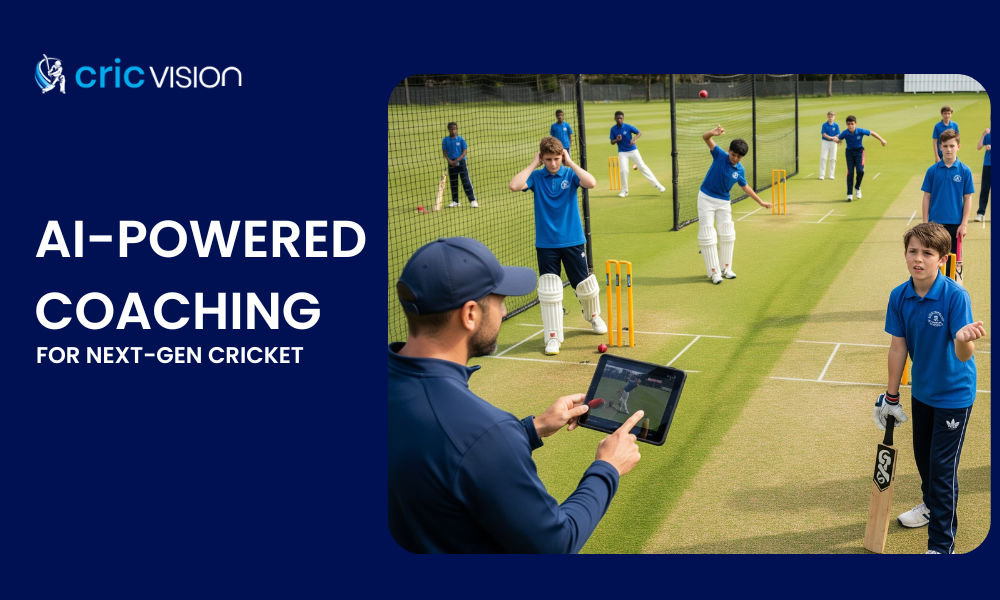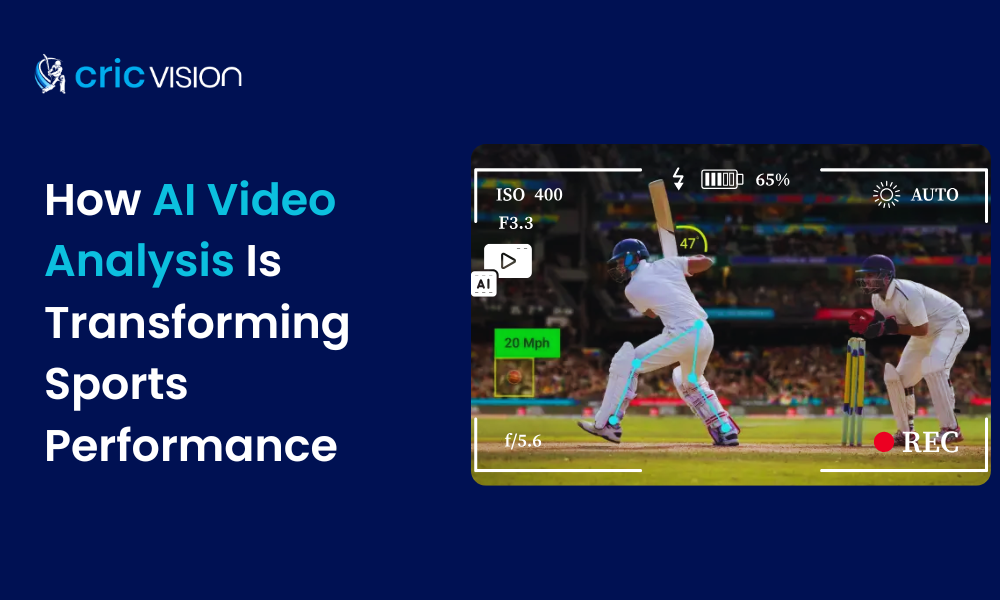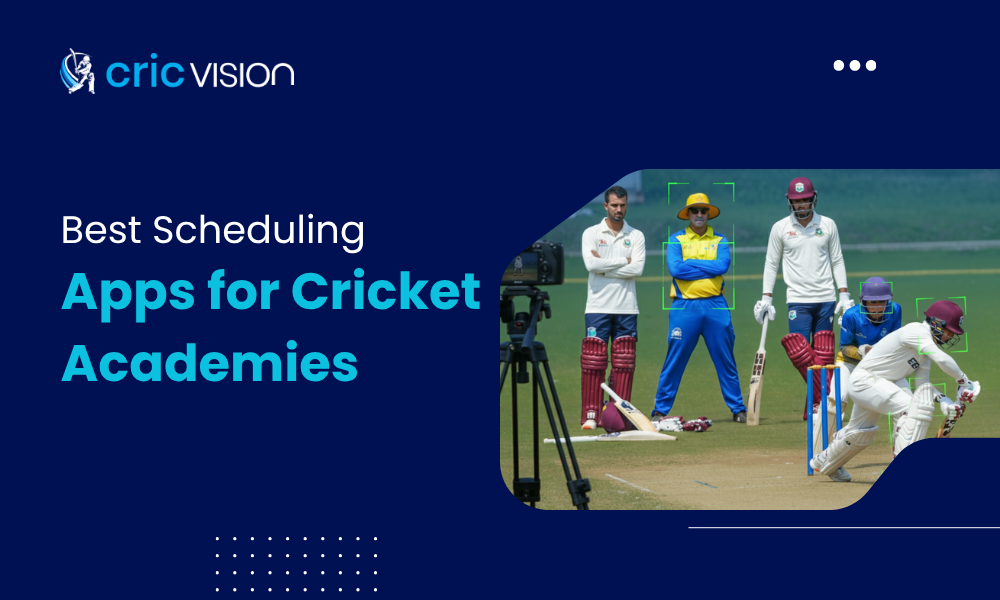Cricket often begins in dusty lanes with makeshift bats and taped tennis balls, yet the journey from casual play to professional arenas demands more than passion alone. For decades, coaching relied heavily on human observation and repetition, often limited by access and resources. Today, technology has transformed this journey, turning cricket into a highly data-driven sport. High-definition video analysis, motion sensors, wearables, and even virtual reality now allow every micro-movement to be studied with precision. The most disruptive shift has been the rise of AI-powered cricket analysis and AI-Powered Cricket Coaching & Technology in Modern Cricket Training apps, bringing professional-level insights directly to players of all levels. By democratizing access to quality feedback and training, these tools are bridging the gap between grassroots cricket and elite performance, shaping a future where advanced coaching is no longer exclusive to a privileged few.
What Role Has Technology Played in Transforming Cricket Training?
Conventional AI cricket coaching has been based on human observation, and repetition. Coaches used to use visual judgement to identify faults in batting poses or bowling postures. This style brought up a host of giants of the game but it lacked scientific precision. The corrections solely relied on the eye and experience of the coach and so was consumer to error.
Due to the introduction of technology training has been shifted to a structural change. Every action can be examined in detail by use of high-definition cameras, biomechanical analysis and replay. The skills of batting may now be analysed into micro-movements, stance, backlift, stride, and follow-through, and those of bowling as to arm angles, release point, position of seam.
ICC performance report study showed astonishing statistics: the use of video analytics and motion sensors in the game increased the batting averages by 17 percent and bowling consistency by 12 percent of the teams that did not use these tools. These statistics open our eyes to the degree to which technology transforms insight into quantifiable advancements.
How Has Artificial Intelligence Changed Skill Development?
Artificial Intelligence is a new aspect that is incorporated in the coaching of cricket. Whereas in traditional analysis, it was time-consuming, AI can analyze enormous volumes of data in real time, recognizing patterns and making predictive answers. It monitors the ball velocity, the time of responses, the scoring tendencies, and even the agility of a player during stress.
In batsmen, the AI can identify weaknesses against specific deliveries, such as tendency to play poorly against left-arm spin or against short pitched deliveries. In the case of bowlers, it will advise the best variations when playing with certain opponents. The insights are specific such that they are tailored to the individual, and therefore training becomes very personal.
Why Are AI-Powered Cricket Analysis and Coaching Apps So Disruptive?
The emergence of AI-powered cricket analysis and coaching apps has transformed the notion of accessibility in cricket. What was once limited to national academies or elite clubs is now within everyone’s reach. Today, even a junior in a provincial city can receive high-quality, data-backed feedback on their game without leaving the country. This shift marks the Future of AI-Powered Cricket Analytics, where advanced insights and personalized coaching are no longer exclusive to professionals but accessible to every aspiring cricketer.
Such apps generally enable the players to:
- Record their batting or bowling using mobile cameras.
- Receive real-time corrections on technique.
- Track progress through data dashboards.
- Connect with certified coaches remotely.
What Kind of Technology Do International Stadiums Use?
Today, international cricket stadiums are not only the fields of spectacles but also centres of in-depth analytics. They are equipped with ultra-motion cameras, ball-tracking devices and even smart pitch which give them real time feedback.
For example:
- Smart pitches measure bounce, moisture, and seam movement.
- Ball-tracking systems like Hawk-Eye help bowlers refine their deliveries.
- Drone-based replays give fielders new perspectives on positioning.
How Are Virtual and Augmented Reality Changing Training?
Virtual Reality (VR) and Augmented Reality (AR) have made cricket training immersive. VR and AR have made cricket training immerse. In VR, batsmen have opportunities to face simulations of real bowlers prior to a set of matches, minimising surprise in real matches.
As an example, a gamer may experience virtually the yorkers of Jasprit Bumrah or spin shots of Nathan Lyon at a controlled setting. Augmented Reality elevates this to give the player a chance to rewind and relive practice sessions. Fielders, like, can see at which spots they are and modify accordingly.
What Benefits Do Grassroots Players Gain From Technology?
The sports technology has perhaps proven to be the greatest beneficiary to grassroots cricketers. Historically, elite coaching was only available to those who could afford it, and most also geographically. Aspiring players who live in the smaller cities now equally get professional advice with the existence of digital platforms.
The benefits include:
- Affordable AI-based training accessible through mobile apps.
- Remote coaching where players share practice videos with certified trainers.
- Participation in online tournaments that provide visibility to selectors.
The use of sports technology in grassroots academies will grow worldwide by over 50 percent by 2025. This is showing that in the future talent scouting will not be limited to physical scouting.
Why Is Data Analytics Crucial in Cricket Strategy?
The cricket decision making has been transformed through data analytics. The analysis of the game has now come to the point where each and every detail in the game is supported by figures.
- Batsmen’s strike rates against specific deliveries are studied before matches.
- Bowlers are assigned roles based on pitch data and historical success.
- Captains receive heat maps of opposition scoring zones to refine field placements.
How Do International Teams Integrate Technology Daily?
Current global cricket involves technology deeply in the way teams train. A normal day for a player may include:
- Pre-practice video analysis of opposition.
- Biomechanical tracking during training.
- Wearable-monitored fitness sessions.
- End-of-day data reviews to refine performance.
This cycle ensures that improvement is continuous and measurable. Areas of weakness identified in the morning can be targeted and corrected by the evening, accelerating skill development and reducing trial-and-error learning.
Beyond individual players, technology also informs team strategy. Coaches can analyze opposition tendencies, simulate match scenarios, and adjust training drills to target collective weaknesses. This integrated approach allows international teams to maintain a competitive edge consistently.
Additionally, technology fosters personalized performance plans. Each player’s data is tracked over time to identify trends, manage workloads, and prevent injuries. By combining real-time feedback with long-term monitoring, teams can optimize both performance and player longevity, making training smarter and more efficient.
Train Smarter with CricVision: AI-Powered Cricket Coaching App
CricVision brings professional-level cricket coaching directly to your fingertips. Using AI-powered video analysis, real-time feedback, and detailed performance dashboards, players at all levels can improve their batting, bowling, and fielding skills from anywhere. Coaches can save hours on administrative tasks while delivering precise insights tailored to each player.
Whether you’re an academy owner, coach, or aspiring cricketer, CricVision makes advanced training accessible, measurable, and effective-bridging the gap between grassroots passion and elite performance.
Final Thoughts
Cricket’s evolution is now driven as much by technology as by talent and hard work. Advances – from AI-driven video analysis and biomechanical tracking to wearable sensors, VR/AR training, and advanced data analytics – make it possible to measure, diagnose, and improve every element of technique and fitness. These tools deliver personalized, actionable insights that accelerate development, reduce guesswork, and make elite-level coaching accessible to players and academies everywhere. When applied consistently, technology turns potential into consistent performance and enables smarter, evidence-based progress.
Elevate your training with CricVision – an AI-powered cricket coaching platform that delivers real-time feedback, detailed performance dashboards, and expert coaching tools. Explore CricVision and start improving today.
FAQs
Q 1: Can the AI apps substitute real coaches?
Yes, AI-based cricket coaching applications are not in a position to completely replace human coaches. Although they offer accurate information, performance-tracking, and video analysis, the social intelligence, motivational abilities, and tactical flexibility of the traditional coach cannot match the requirements of holistic player development.
Q 2: Do wearable devices give correct results in cricket?
Present-day wearable devices have attained an accuracy level in the range of 90 percent in terms of biometrics, workload, and motion patterns. The tools enable cricketers to monitor fatigue levels, prevent injuries, and optimize training volume, although human supervision remains crucial due to some calibration issues.
Q 3. Is sports technology affordable to grassroots players?
Yes, there is a lot of improvement in accessibility. A range of digital coaching apps are available at low costs or even free of charge, such as video feedback or even AI analyzing. Affordable wearables are also getting in the market to the point where young cricketers at the society level without a lot of money might just be able to train using higher-end insights.
Q 4: Are technology-dependent professional cricketers?
Technology has taken a leading role in elite cricket. Players in leagues such as IPL and Ashes use AI and analytics, biomechanical sensors, and VR simulations. The tools can be used to conduct match preparation, develop individual and personal performance strategies, and manage workloads effectively, thereby improving individual and team performances.
Q 5: What is the future of cricket technology?
The future of cricket technology is bright because it will feature injury prediction models, AI-based individually customized simulations, and VR-based training. The opening of global digital academies is probable, and they will allow distant coaching and talent identification, as well as ensuring that even young talent will be able to access the highest level of development resources.





